Sun Exposure and Skin Cancer: What You Need to Know— by Camrey Tuttle, DNP, FNP-C
As the days grow longer and the sun shines brighter, many of us eagerly head outdoors to soak up the warmth and enjoy various activities. While sunlight is essential for our well-being, providing much-needed vitamin D and boosting our mood, it’s crucial to be mindful of the risks associated with excessive sun exposure, particularly the development of skin cancer. While skin cancer most often presents later in life, the damage is often created in childhood to early adult years. Therefore, it is important to take proper skin precautions regardless of your stage of life.
Understanding Skin Cancer
Skin cancer is the most common form of cancer, and its incidence has been rising over the years. The primary cause of skin cancer is ultraviolet (UV) radiation from the sun or tanning beds. UV radiation damages the DNA in our skin cells, leading to mutations that can cause cancer. There are three main types of skin cancer:
Basal Cell Carcinoma (BCC): The most common type, BCC rarely spreads but can cause significant damage if not treated.
Squamous Cell Carcinoma (SCC): Less common than BCC, SCC can spread to other parts of the body if not caught early.
Melanoma: The most dangerous form of skin cancer, melanoma is less common but more likely to spread and become life-threatening.
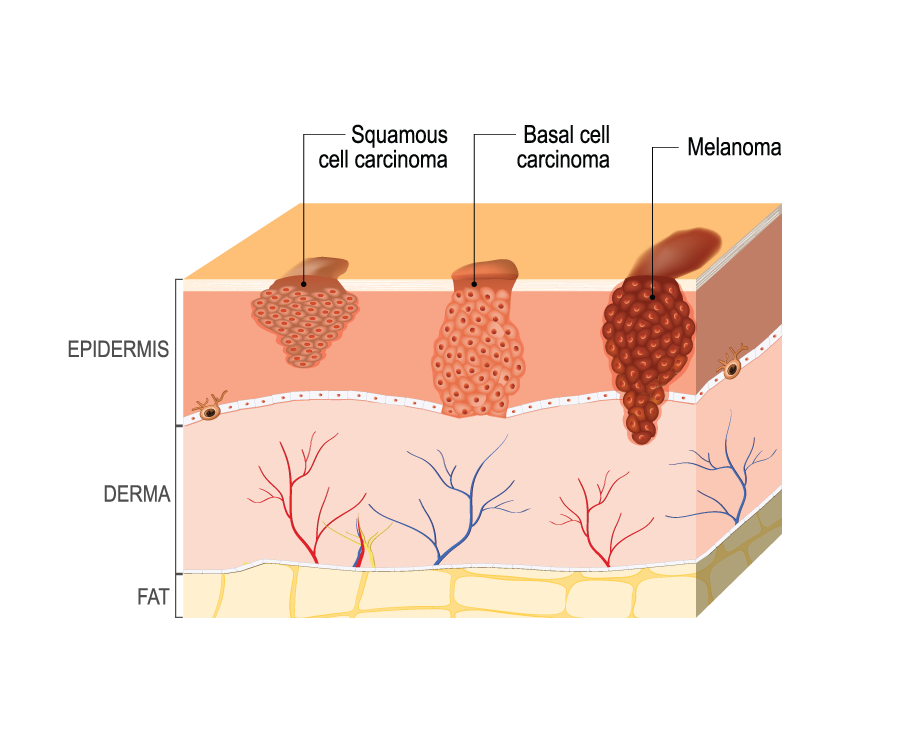
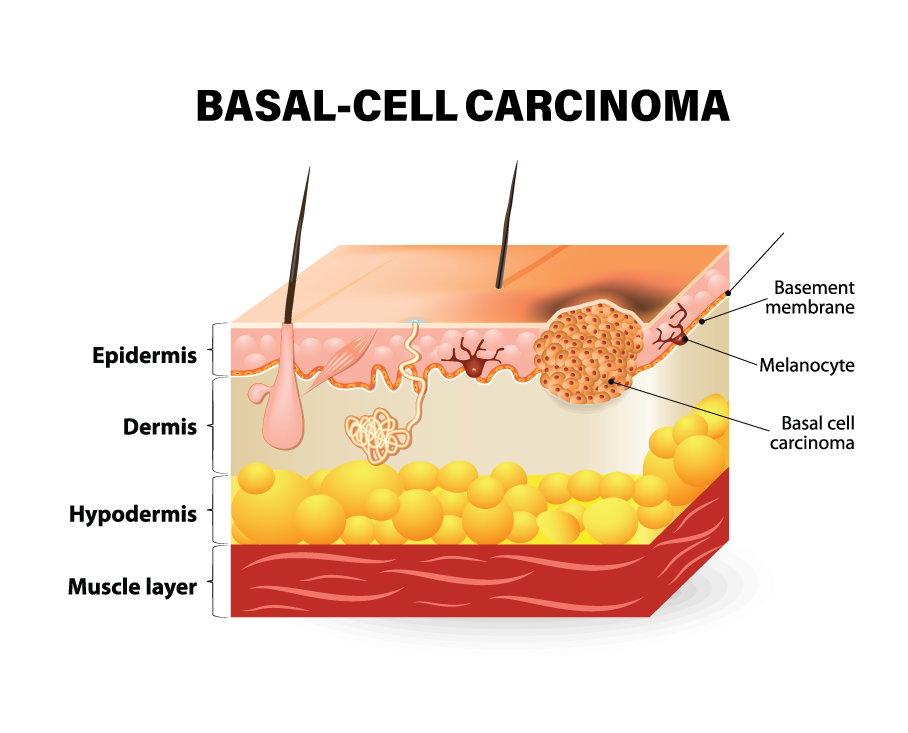
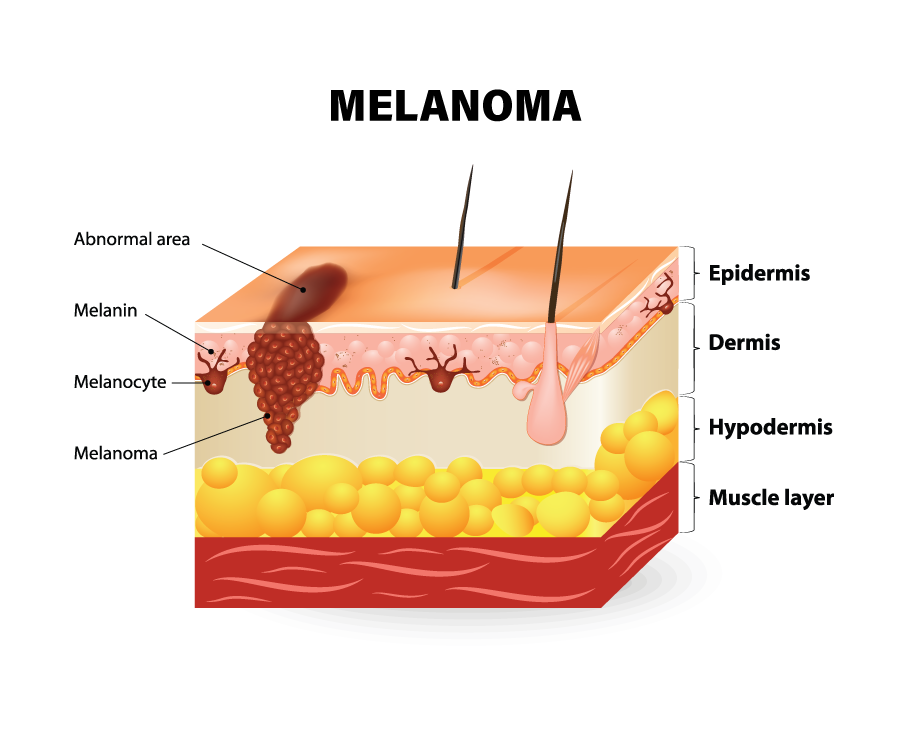
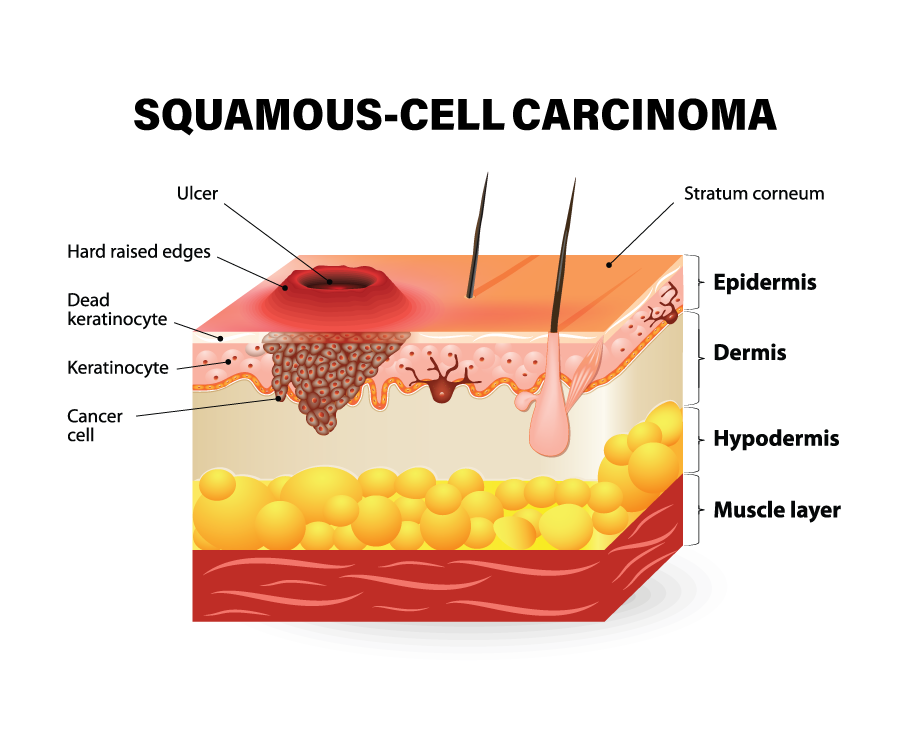
The ABCDEs of Skin Lesions
Early detection is key to successfully treating skin cancer. One of the most effective ways to catch skin cancer early is by performing regular self-examinations of your skin. Dermatologists recommend following the ABCDE guide to identify potentially cancerous lesions:
A – Asymmetry: If you draw a line through the middle of the mole or lesion, the two halves should match. If they don’t, this asymmetry is a warning sign.
B – Border: The edges of an early melanoma are often uneven, scalloped, or notched. A benign mole has smooth, even borders.
C – Color: Having multiple colors (shades of brown, black, tan, red, white, or blue) in a single lesion is another warning signal. Benign moles usually have a single shade of brown.
D – Diameter: Melanomas are usually larger in diameter than a pencil eraser (about 6mm), but they can be smaller when first detected.
E – Evolving: Any change in size, shape, color, or elevation, or any new symptom such as bleeding, itching, or crusting, points to danger.
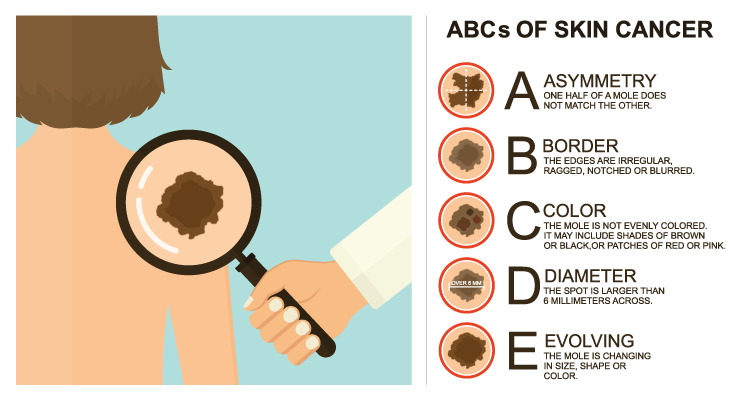
Protecting Your Skin
Preventing skin cancer begins with protecting your skin from excessive sun exposure. Here are some essential tips:
Use Sunscreen: Apply a broad-spectrum sunscreen with an SPF of 30 or higher on all exposed skin, even on cloudy days. Reapply regularly especially after swimming or sweating.
Seek Shade: Especially during the midday hours when the sun’s rays are the strongest.
Wear Protective Clothing: Long-sleeved shirts, pants, and a wide-brimmed hat can provide a physical barrier against UV rays.
Avoid Tanning Beds: The UV light from tanning beds is just as harmful as the sun and increases the risk of skin cancer.
Conclusion
By understanding the risks and taking proactive measures, we can enjoy the sun safely and reduce our risk of developing skin cancer. Remember, when it comes to your skin, vigilance and protection are your best defenses. Keep the ABCDEs in mind, practice sun safety, and consult with your provider if you have any concern about your skin.
See website here for CDC recommendations to avoiding skin cancer: https://www.cdc.gov/skin-cancer/index.html

![Sun-Safety-Skin-Cancer-header]](https://gagonfamilymedicine.com/wp-content/uploads/2024/05/Sun-Safety-Skin-Cancer-header-845x321.png)
 by
by 
